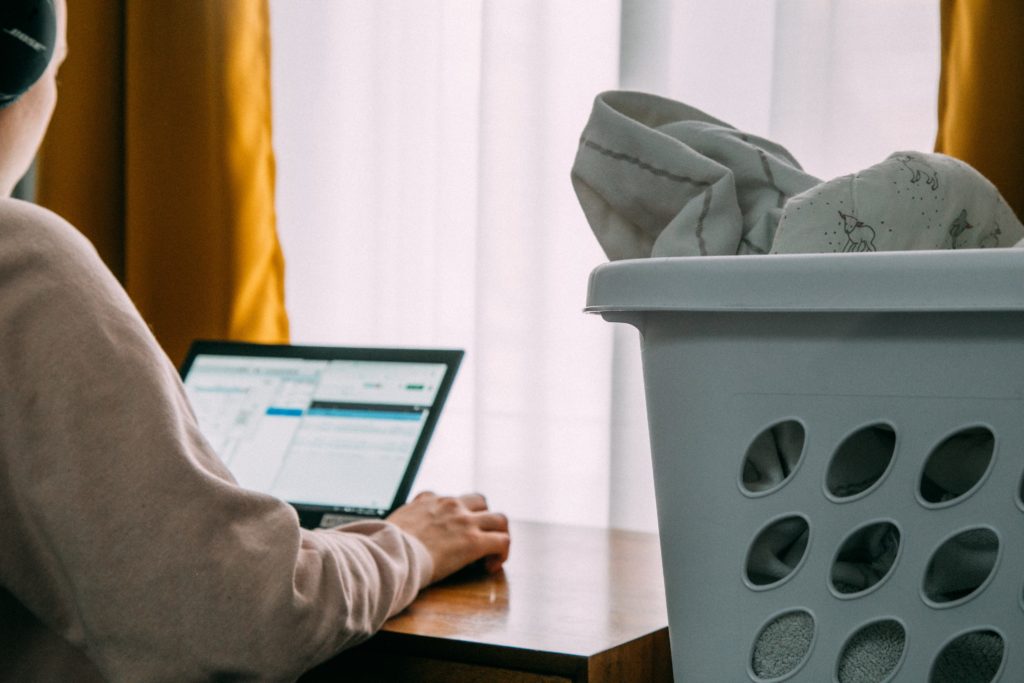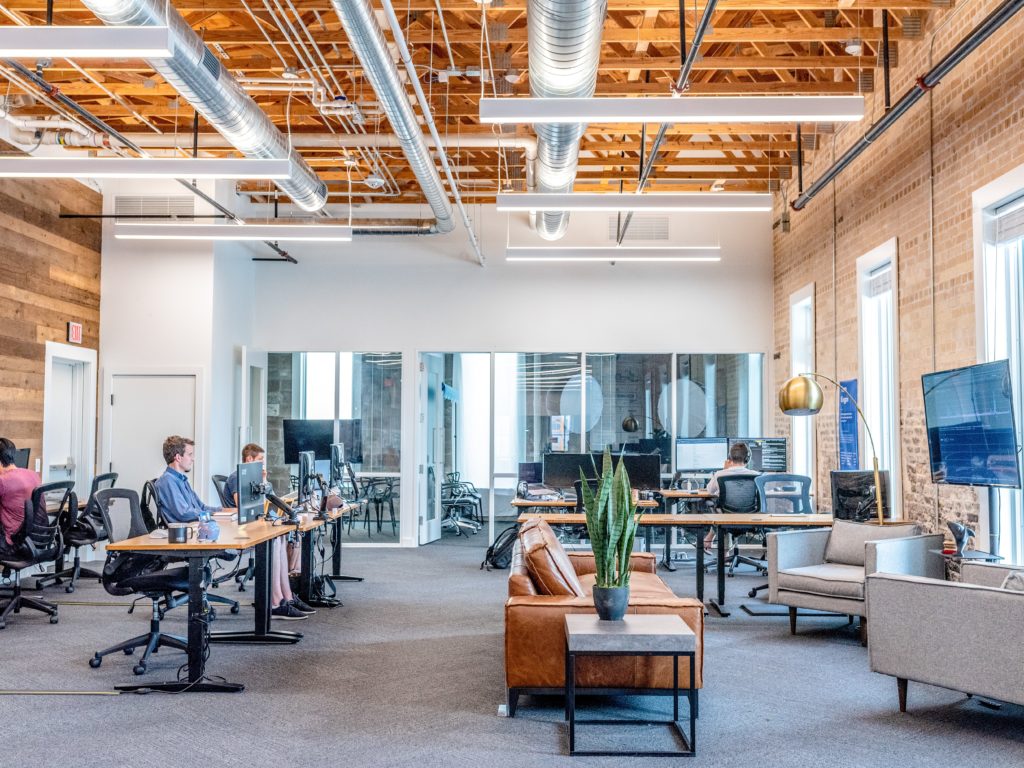The very early signs of a slow and gradual return to work are appearing. Restrictions on our movements are lifting; schools are welcoming back selected year groups, and business owners are making plans to roll back their shutters. But for the millions of workers returning to offices, will the post-COVID-19 workplace be business as usual?
Understandably, there is a great deal of apprehension surrounding the returning to work post-lockdown. The uprooting of our daily rhythm at home to return to a world that has radically changed feels a little unsettling right now, particularly when there is no clear picture of the road ahead.
While many of us are still working from home, there are many employees on job retention schemes or have been laid off, all waiting for news from our governments. We all need to know how the rest of the year will pan out: whether we stay put, or we venture out.
But amid the discussions, conflicting reports, and advice, there is a real need to have a clear plan on a return to the office when it is deemed safe to do so.
Bringing staff back to the office

The CIPD (the UK’s Chartered Institute of Personal Development) is urging businesses to ensure they can meet three key tests before bringing their people back to the workplace:
Is it essential? Right now, if you can, you should work from home. But when restrictions are lifted, employers should look at which job roles can remain remote, should the individual in question prefer.
Tasked with improving your internal comms?
Is it safe? Aside from taking preventative measures mentioned above, plenty of time should be taken in testing the new methods put in place. Sections of the workforce are gradually brought back while monitoring the efficacy of the health and safety measures.
Is it mutually agreed? Managers will be dealing with understandable concerns from their workers, about the validity of coming into work. Issues around commuting by public transport and the safety of the working environment will have to be discussed. Some workers may be immunocompromised or have other health concerns, and therefore be at a higher risk. All concerns should be resolved on a case-by-case basis.
Ultimately, if you are making the decision to open up offices and workplaces soon, the physical, emotional, and mental well-being of the workforce must remain the key principle.
Office or home?

Business leaders are hoping for some clarification over the next few months from the relevant authorities. Right now, we can only plan on several possible scenarios. These are:
- Keeping all staff working from home
- A gradual return to the office over the next six months
- A dispersed workforce with both in-house and dispersed employees
When we talk about returning to the office, there’s a reoccurring argument of whether we should. Is heading back to the office necessary, or safe, or even worthwhile? The conversations taking place right now focus on the probability of remote work – for at least a percentage of employees – being a permanent fixture. Certainly, the speed at which organizations mobilized their workforce from office to home has been impressive. But was it a surprise? Ultimately, it has finally proven that when a job requires a laptop and a secure Wi-Fi connection, an employee can successfully work from anywhere.
Over this period, all private concerns regarding work rate and accountability have vaporized. What Time magazine called “the world’s largest working from home experiment,” is presenting a convincing case: that offsite operations can be just as effective – if not more so – than in-house.
The case for remote working

A familiar example of the value of remote working is presented in a trial carried out by CTrip, a 16,000- employee, NASDAQ-listed Chinese travel agency. The business wanted to test the effectiveness of working from home, so asked a randomly assigned percentage of their call center workers to work from home for nine months. The monitoring of their progress saw the home workers performing 13% better. 9% of this was from working more minutes per shift (home workers were taking fewer breaks and sick-days) and 4% from more calls per minute, which was attributed to a quieter working environment (Source).
A survey carried out by Salesforce Research discovered that employees had developed a taste for working from home. With no expensive and lengthy commute, and with more time to spend with family, workers realize there is a work-life outside of the office. The poll reveals that the top three company offerings as a result of the COVID-19 pandemic were: increased flexibility (41%), option to work remotely (39%), and more frequent communication (34%). The top three factors regarding a return to normal work life after the pandemic abates are: workplace health and safety (51%), job security (46%), and family (44%).
It’s also important to bear in mind that our productivity since working from home has been despite of radical lifestyle changes which have seen us becoming hermetic: home-schooling, keeping safe, and trying not to be overwhelmed by the enormity of the crisis. For all of that, we’ve done pretty well.
Can we really go back to old habits?

A large section of the workforce has enjoyed the benefits of remote working. But while setting up your desk in the spare room offers an array of benefits, it isn’t the answer to everything. If we are to speculate about the future, the discussion needs a more measured approach. And right now, it would be unwise to condemn the office as dead and buried.
We are a social species, and to opt for an all-remote workforce would not be beneficial long-term – at least for the majority of organizations. Offices continue to serve a purpose. These are the place where ideas come alive, collaboration takes place, and innovation thrives. The office is still important; it’s just that the argument has changed.
Tasked with improving your internal comms?
It was only in 2013 when the newly-appointed Yahoo CEO, Marissa Mayer, informed the entire Yahoo workforce that remote working was no longer an option. This was a serious blow to the idea of working offsite. After all, if one of the world’s biggest tech giants couldn’t make it work, who could?
Fast forward a few years, and the head of Barclays Banks, Jess Staley, recently told the press that “the notion of putting 7,000 people in the building may be a thing of the past.” Google has told its employees to stay home for the rest of the year. And Facebook has “aggressively opening up remote hiring” – with chief executive Mark Zuckerberg revealing that he expects about 50% of its workforce will end up doing their jobs outside of Facebook’s offices within ten years. After years of cynicism, working from home is now not only acceptable but also essential. Thanks to a plethora of sophisticated digital workplaces, countless companies have navigated the choppy waters of the lockdown and a now-unstable economy. And as for Yahoo, the ban on remote working was overturned a while back.
In order to progress, we need to design a digital workplace that enables flexibility and allows people to work where they are the most productive. So, who knows? The future of your organization may well see a dual workforce: the remote workers, and the office workers.
Can going ‘back to work,’ work?

When it’s time to reopen the doors, a solid strategy is required. How will you manage your people and ensure their safety? How do you communicate new ways of working and changes to the status quo? How do you make sure your business is impacted as little as possible?
After months of lockdown, workers are divided: those who want to remain working from home, and those who yearn for office energy and face-to-face interactions with colleagues. Our performance during lockdown has helped prove that it is entirely possible to have these two groups working the way they want concurrently.
While a staged return looks likely to unfold from July onwards, a return to the office rests on official restrictions lifting, and any possible to-ing and fro-ing as contagion levels are monitored. Some places may not see ‘normality’ until Christmas, or even the new year. And there is the threat of the second wave of infection and another lockdown. So much uncertainty means organizations will need to have plans for several different scenarios over the next twelve months.
For the majority of organizations, the management team will be responsible for the task of leading their companies through this period. Together, they will all have to agree on the right time to return to the workplace and work out the best way of doing this in a way that will cause as little disruption as possible. They will also have to work out how to manage any possible returns to lockdown, and maintain the same level of agility displayed since March.
Safety first

When it comes to welcoming people back, the top priority is the health and safety of the workforce. As employers, your organization has a duty of care over their workforce. There are legal, moral, and ethical concerns in making sure every effort is made to safeguard their people’s well-being.
So, when it comes to returning to the office, your employees will expect the strictest measures to be implemented. These will include one-way systems in and around the office, regular deep cleans, and sufficient spacing between desks. For busier offices, rotas will be drawn up for different teams to come in on alternate days, staggered starting times, and cordoned off social areas. Every office space should comply with the government and state regulations.
And that’s just offices. There lies huge logistical challenges with warehouses, laboratories, large kitchens, and factories. Organizations need to achieve the right levels of hygiene and safety to assure workers – and they need to communicate all this effectively.
The tasks for returning to the workplace

Welcoming people back does involve some planning. A timetable to reduce the number of people within the office space should be drawn up. Perhaps in order to keep some consistency, employees will take a three-days-out-two-days-in approach, or similar.
However, getting all staff back in isn’t the approach for everyone. Management should look at the roles that were unaffected by the move to remote working, and those that were. Employees whose work is improved by being in the office should be prioritized as one of the first cohorts to return to the office space. However, there are other roles, such as sales, which may have transformed permanently over the past few months. Historically, salespeople would spend a lot of time traveling and meeting clients face-to-face. With organizations scaling back their physical interactions, this type of role could see virtual meetings as an enduring legacy of the crisis.
Tasked with improving your internal comms?
Task 1: Dealing with redundancies and related issues once the furlough scheme ends
For an HR department, the recalling of furloughed staff to return to work involves a great deal of tact and sensitivity. After months of not working, employees will require a period of transition. Notice will also need to be given, which will allow the individual to organize their personal rearrangements to enable a return to work. In some workplaces, there may even be paperwork and reassessments that need to be carried out.
Many companies will have been forced to carry out redundancies, and the departments affected by job losses will need to readjust when ‘normality’ returns. Depending on the economic climate and the industry, recruitment may see a rise. Leaders should prepare themselves for a range of scenarios once lockdown has come to an end.
Task 2: Managing holidays, sickness and other absences
While on furlough leave, all employees’ contractual arrangements remain the same, and workers maintain their rights under the Working Time Regulations 1998 in the UK.
With this in mind, your HR department may face a challenge on the return to work if those who are furloughed want to use their accrued holiday, just as workload increases. You may wish to offer to buy back the annual leave that is in excess of statutory leave. A new regulation has been introduced, allowing those who cannot take their full annual leave entitlement because of coronavirus to spread out their extra leave over two years. You should consider whether it would be sensible to create a new holiday policy, such as capping the amount of leave a worker can take in a three-month period to three weeks, to manage this challenge.
Task 3: Onboarding remote and in-house workers
The procedure of welcoming people into the business may be in flux at the moment as you modify your recruiting, interviewing, and onboarding processes. This current period may well spark a move to your organization employing full-time remote workers as standard.
Either way, onboarding is a fundamental part of both in-house and remote workers’ introduction to the company. It not only provides training and introduction to staff members, but it also allows the starter to become accustomed to the culture, ethos, and values of the organization. If you recall workers back to your office, who started their position during the lockdown, you may find it necessary to do another mini-onboard and introduce them to key figures in your business and guide them around the workplace. In the meantime, you can find out more about remote onboarding here.
Task 4: Managing and communicating with remote workers
The absence of face-to-face interactions would suggest that communication could suffer in remote workplaces. However, communication may have seen an increase in your organization as we check in with colleagues, update them on tasks, and chat informally.
Having strong channels of communication is important when you are updating employees on office updates. Remote workers may communicate health concerns, childcare arrangements, or uncertainties over the future during these times, and solutions can be worked out on the basis of this.
Task 5: Creating a multi-workplace normality
It is most likely that we will be dealing with a dual workplace of the office and home when restrictions lift. Teams have already undergone training for working together regardless of location over the past few months. This will continue as individuals choose to attend the office, and others remain working from home.
With so much confusion regarding the nature of the novel virus and the understanding that we have all experienced the virus in different ways, business leaders should lead with empathy and bow to their workers on where they choose to carry out their work. This is a workplace revolution that will test the most sophisticated of organizations – and will hone a digital workplace that has held countless businesses together over these turbulent months.
Enduring change?

It’s certainly the case that the landscape for traditional office jobs has changed, probably forever. Had this crisis happened just ten years ago, businesses would not have coped well with the same level of disruption we have experience this year.
It is a testament to the technological advances of the past ten years that we can move our businesses wherever we need to, even if that means working at the kitchen table with our children. Although the circumstances aren’t ideal, this working from home experiment has taught us how tenacious we are.
Even if it took a pandemic to prove to business leaders that remote working was an effective, flexible, and achievable way of working, the past few months have taught us many lessons.
Firstly, always prepare your business for a crisis, whether that is a pandemic, your office disappearing overnight, or losing your biggest client. Work out a survival plan for the worst-case scenarios, and revisit them every so often. Rehearsing your crisis management plans is an important part of your business arsenal.
Secondly, we are tougher than we think. Your organization has pulled off the incredible feat of not only getting through this period, but maintaining their commitment to their company. It may have been chaos at home, with broken sleep and mounting anxiety, but we’ve got up, shown up and performed to the best of our abilities.
Thirdly, things have changed forever, but maybe in the long term that’s for the best. There may be elements of our ‘old office life’ that we will miss, and the levels of social interaction we have with our colleagues will take some getting used to. But on the plus side, maybe you’ve just waved goodbye to your commute, and maybe the change means allows you to spend more time with your family. Maybe during this whole crisis, we’ve realized what the most important things in life are. And if anything, when our offices do re-open, we will appreciate the “normal” things – the conversations, the company, and the routine – so much more.



